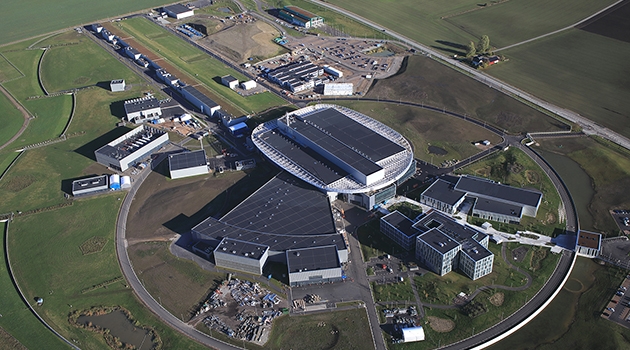
Swedish universities, institutes and companies collaborate on planning new instruments for installation at ESS, the world’s most powerful research facility for neutron radiation, outside Lund. The Swedish Research Council has now granted funding for two interdisciplinary projects as feasibility studies for future instruments at ESS: SAGA and HIBEAM, writes Uppsala University in a press release.
A dedicated Grazing-Incidence Small-Angle Neutron Scattering (GISANS) instrument will enable researchers to analyse in detail how a neutron beam spreads when reflected from a surface. The SAGA instrument (Surface Analysis using Grazing Angle neutron scattering) will provide unique knowledge of surface layers for potential use in developing new medicines, packaging, batteries and other applications.
“SAGA will give us a faster and more detailed understanding of the appearance and functioning of cell walls, for example. This will help us develop better medicines, food and packaging, as well as batteries and electronics for a sustainable society,” says Tommy Nylander, Professor of Physical Chemistry at Lund University and active at LINXS – Lund Institute of Advanced Neutron and X-ray Science.
Strengthens Swedish participation
Funding for the planning phase of Swedish instruments at ESS strengthens Swedish participation
Research related to SAGA concerns the interface between physics, chemistry and biology, while HIBEAM creates an environment for collaboration between specialists in particle and nuclear physics. The two projects are based on internationally prominent research and are being carried out in collaboration with international and industry partners.
“Swedish research already holds a leading position in surface physics and chemistry and the SAGA project is expected to further strengthen technological developments in the field. Applications exist for all major manufacturing industries and it is therefore very positive that we are now able to take the next step,” says Max Wolff, Professor of Neutron Scattering, Uppsala University.
The initiators of the SAGA project are Lund University, Uppsala University, Malmö University, Linköping University and KTH Royal Institute of Technology. This first phase of planning for an instrument proposal to be submitted to ESS will take approximately three years to prepare.
Also interesting: New processing method for image data
Selected for you!
Innovation Origins is the European platform for innovation news. In addition to the many reports from our own editors in 15 European countries, we select the most important press releases from reliable sources. This way you can stay up to date on what is happening in the world of innovation. Are you or do you know an organization that should not be missing from our list of selected sources? Then report to our editorial team.




